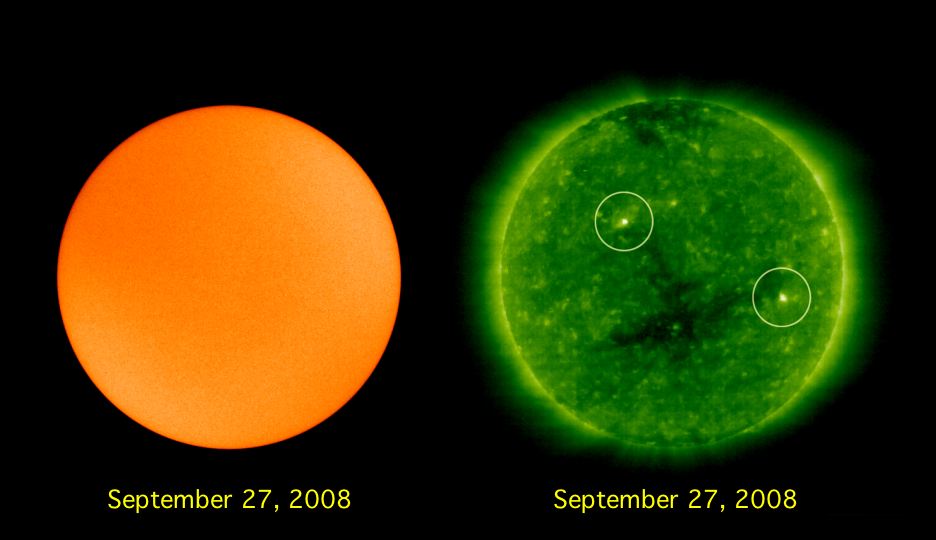
 Credit:SOHO
Credit:SOHO
Spotless
Everything runs in cycles and what goes up must come down. We hear that a lot these days. The topic of conversation is of course the sun. The solar cycle takes 11 years to go from sunspot minimum to maximum and back to minimum. The cycle is driven by changes in the Sun's magnetic field, and is actually a 22-year cycle: during the second 11 years the magnetic polarity of the solar field is reversed. The Solar and Heliospheric Observatory satellite (or SOHO for short), a joint ESA and NASA mission, has been watching the sun since 1995. Rarely is the sun as quiet as it was on September 27, 2008 - as shown in the visible-light image above left, there were absolutely no sunspots to be seen. If the activity stays this low, this might be the most inactive the Sun has been since the dawn of the space age. This still pales in comparison to the 17th century when for a period of 70 years (called the Maunder Minimum) there were no reported sunspots. Some scientists believe the Maunder Minimum responsible for a "Little Ice Age" and the sound of some violins. The image on the right, taken 3 days later in extreme UV light, shows the formation of two active regions (in the circles) but both faded away before becoming full-fledged spots. So how low will it go? Only time will tell.
Published: October 13, 2008
<
HEA Dictionary ● Archive
● Search HEAPOW
● Other Languages
● HEAPOW on Facebook
● Download all Images
● Education ● HEAD
>
Each week the HEASARC
brings you new, exciting and beautiful images from X-ray and Gamma ray
astronomy. Check back each week and be sure to check out the HEAPOW archive!
Page Author: Dr. Michael F. Corcoran
Last modified Tuesday, 27-Feb-2024 10:08:16 EST


